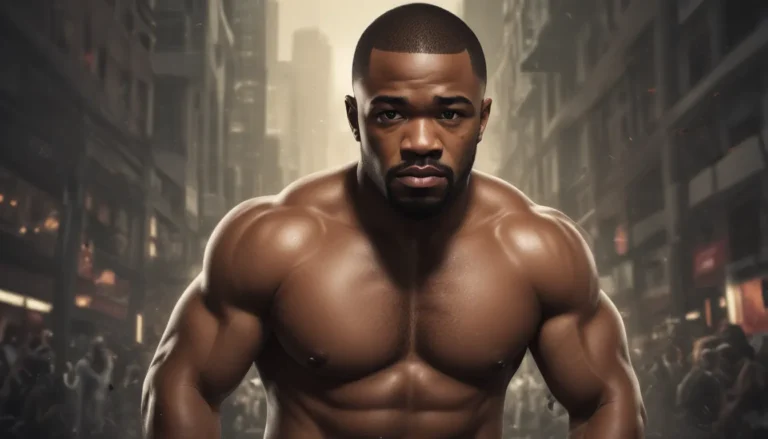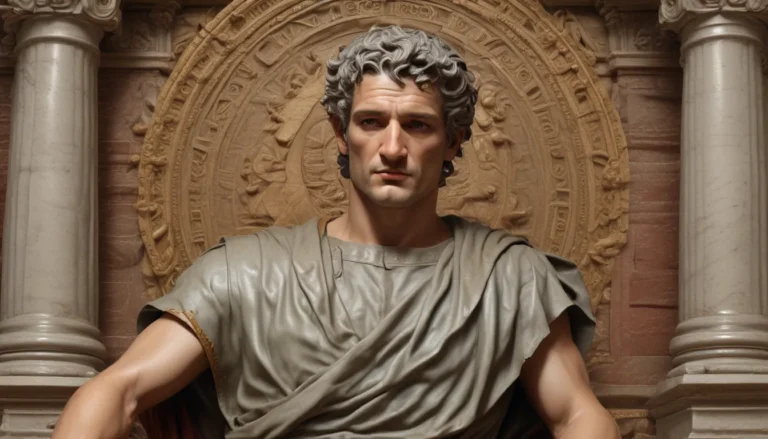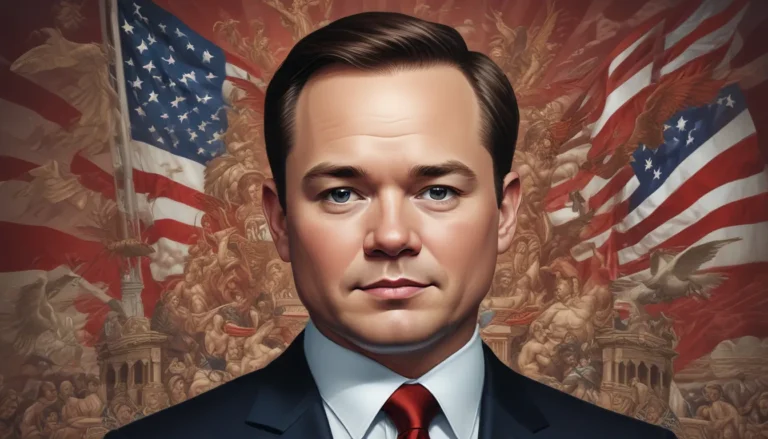The images in our articles may not match the content exactly. They are used to grab your attention, not to show the exact details in the text. The images complement the text but do not replace it.
Welcome to the realm of Norse mythology, where the thunderous deity Thor reigns supreme with his mighty hammer Mjolnir and his fierce battles against giants. In this article, we will embark on an exhilarating journey through 18 intriguing facts that illuminate the legend and lore surrounding Thor, shedding light on his enduring popularity across cultures and centuries. Join us as we delve into the captivating world of Thor and uncover the secrets that have captivated generations of enthusiasts. So, grab your hammer and brace yourself for a thunderous adventure!
Thor: The Norse God of Thunder
At the heart of Norse mythology stands Thor, known as Þórr in Old Norse, a central figure associated with thunder, lightning, storms, and fertility. As the son of Odin, the chief god, and the earth goddess Fjörgyn, Thor’s domain encompasses the natural forces of the world and the protection of humanity. His presence symbolizes power, resilience, and unwavering commitment to safeguarding the realms of the gods and humans alike.
Mjolnir: The Mighty Hammer
One of the most iconic symbols of Thor’s strength and prowess is his hammer, Mjolnir, crafted by the skilled dwarves Brokkr and Sindri. Mjolnir possesses incredible abilities, never missing its target when thrown and returning to Thor’s hand with lightning speed. This legendary hammer is not only a formidable weapon but also has the power to summon storms and shield Asgard from enemies, showcasing the awe-inspiring might of Thor.
-Crafted by dwarves Brokkr and Sindri
-Returns to Thor’s hand when thrown
-Capable of summoning storms and protecting Asgard
The Battle Against Giants
Thor’s ferocious battles against giants stand as testaments to his strength, courage, and unwavering dedication to defending Asgard and its inhabitants from the forces of chaos. These confrontations highlight Thor’s valiant spirit and his unwavering resolve to protect both the divine and human realms from looming threats.
Thor’s Mighty Chariot and Goats
As a god of thunder, Thor traverses the skies in a magnificent chariot pulled by two magical goats, Tanngrisnir and Tanngnjóstr. These extraordinary goats possess the unique ability to be slaughtered and consumed by Thor, only to be resurrected the following day, ensuring an endless supply of sustenance during their journeys through the realms. This symbiotic relationship underscores Thor’s connection to fertility, abundance, and the cycle of life.
Thor’s Marvelous Belt and Iron Gloves
To augment his already formidable strength, Thor adorns a special belt named Megingjörð, which amplifies his power exponentially. Additionally, he dons iron gloves, Járngreipr, to safely wield Mjolnir and channel his thunderous might with precision and control. These artifacts symbolize Thor’s strategic preparedness for battle and his unwavering determination to face adversaries with unmatched strength and tenacity.
Protector of Midgard: The Human Realm
Deeply invested in safeguarding Midgard, the realm of humans, from various threats, Thor stands as a stalwart protector of humanity. His vigilance against the giants, who seek to disrupt the balance between the mortal and divine worlds, exemplifies his compassion, sense of duty, and unwavering dedication to safeguarding the well-being of humankind.
Thor’s Fierce Battle with Jormungandr
One of Thor’s most legendary feats is his epic showdown with the colossal serpent Jormungandr, also known as the Midgard Serpent. Prophesied to face each other during Ragnarok, the apocalyptic battle that heralds the end of the world, Thor and Jormungandr engage in a climactic clash of titans. Despite the daunting challenge posed by the serpent, Thor confronts Jormungandr fearlessly, embodying valor, determination, and a commitment to fulfilling his pivotal role in the cosmic cycle of creation and destruction.
The Thor’s-day Connection
A linguistic tribute to Thor’s enduring influence, the name “Thursday” derives from “Þórsdagr,” meaning “Thor’s day” in Old Norse. This etymological link serves as a poignant reminder of Thor’s profound impact on Norse culture and the lasting legacy of his revered worship, echoing through the annals of time and cultural evolution.
The Marvel Cinematic Universe and Thor
Beyond the realms of mythology, Thor’s iconic presence extends into the modern entertainment landscape, particularly in the Marvel Cinematic Universe (MCU). Portrayed on screen by the charismatic actor Chris Hemsworth, Thor captivates audiences worldwide with his heroic exploits, internal conflicts, and charismatic persona. The cinematic portrayal of Thor has garnered a global following, enchanting viewers with his larger-than-life persona and extraordinary adventures.
-Portrayed by actor Chris Hemsworth
-Showcases heroic deeds and inner struggles
-Global audience engagement and popularity
Thor’s Memorable Catchphrase: “I Am Thor!”
In the realm of Marvel films, Thor’s unforgettable catchphrase, “I am Thor!” resonates with audiences, underscoring his identity, power, and unwavering resolve to overcome all obstacles. This iconic declaration embodies Thor’s confidence, determination, and unwavering commitment to facing challenges head-on, inspiring viewers with his indomitable spirit.
Thor’s Iconic Appearance
Described in Norse mythology as a red-bearded, robust figure with eyes that sparkle like lightning, Thor’s distinctive appearance includes a winged helmet and a belt accentuating his physical prowess. This iconic depiction of Thor has influenced artistic representations across various mediums and time periods, solidifying his stature as a legendary figure of strength and power.
Thor’s Connections to Other Norse Gods
As a member of the Norse pantheon, Thor shares intricate relationships with other deities, including his father Odin, his mother Fjörgyn, and his mischievous half-brother Loki. These complex connections enrich Thor’s character and the narratives in which he features, adding layers of depth, conflict, and intrigue to his mythological lineage.
Thor and the Rune Stones
Thor’s influence extends to ancient Norse runestones adorned with symbols and inscriptions used for communication, memorials, and religious rites. The symbol of Thor’s hammer, Mjolnir, graces some runestones, symbolizing protection, power, and divine authority, reflecting Thor’s enduring presence in the spiritual and cultural tapestry of Norse societies.
Thor’s Popularity in Contemporary Culture
Thor’s appeal transcends mythological lore and cinematic adaptations, permeating contemporary culture through diverse mediums, including comic books, graphic novels, video games, and merchandise. His indelible image and enthralling narratives have solidified Thor’s status as a cultural icon, resonating with audiences seeking inspiration, heroism, and a connection to ancient mythic traditions.
The Cult of Thor in Ancient Scandinavia
In ancient Scandinavia, Thor enjoyed a fervent cult following, with devotees seeking his protection and invoking his name in religious ceremonies and rituals. Temples dedicated to Thor stood as symbols of reverence and worship, underscoring his significance in the spiritual lives of Norse communities and the enduring legacy of his mythic persona.
Thor’s Symbolic Associations
Thor is associated with a myriad of symbols imbued with profound meaning, each reflecting aspects of his divine attributes and mythic persona. The hammer Mjolnir symbolizes power and protection, while lightning signifies Thor’s affiliation with thunderstorms and natural forces, serving as potent symbols of strength, resilience, and divine authority that resonate with those seeking fortitude and inspiration.
Thor’s Influence on Language and Literature
Thor’s mythological legacy reverberates through the linguistic and literary traditions of the Norse people, manifesting in words and place names that pay homage to his enduring influence. These linguistic echoes serve as testaments to Thor’s lasting impact on Scandinavian culture and language, affirming his status as a legendary figure of mythic renown and cultural significance.
Thor’s Everlasting Legacy
As we conclude our exploration of Thor’s captivating realm, his timeless legacy endures as a testament to the enduring power and allure of myth. From mythological origins to modern-day adaptations, Thor continues to enrapture hearts and minds with his heroic exploits, indomitable spirit, and unwavering commitment to confronting challenges with courage and determination. As we unravel the tapestry of Thor’s tales, we are reminded of the perennial struggle between chaos and order, encapsulating the eternal themes of heroism, sacrifice, and the indomitable human spirit that resonates across cultures and generations.
Frequently Asked Questions (FAQs)
Who is Thor in Norse mythology?
Thor is the Norse god of thunder, son of Odin and Fjörgyn, associated with storms, lightning, and fertility.
What is Thor’s weapon?
Thor wields the mighty hammer Mjolnir, crafted by dwarves, possessing immense power and the ability to control thunder and storms.
Is Thor part of the Marvel Cinematic Universe?
Yes, Thor is a prominent character in the MCU, portrayed by Chris Hemsworth.
What is the significance of Thor’s hammer, Mjolnir?
Mjolnir symbolizes Thor’s power and protection, capable of summoning storms, returning when thrown, and shielding Asgard.
Does Thor have connections to other gods?
Thor is part of the Norse pantheon and has relationships with Odin, Fjörgyn, Loki, and other deities.
What does Thor’s catchphrase “I am Thor!” mean?
Thor’s catchphrase emphasizes his identity, power, and determination to overcome obstacles.
Enjoyed learning about the remarkable Thor? Share your newfound knowledge with friends and family and continue exploring the vibrant world of Norse mythology and the enduring legacy of the god of thunder!
Discover the awe-inspiring world of Norse mythology with Thor, the mighty god of thunder who embodies strength, valor, and determination. Join us on a captivating journey through 18 illuminating facts that unveil the mythic realm of Thor, from his epic battles against giants to his enduring influence on contemporary culture. Embrace the thunderous legacy of Thor and unravel the mysteries of this iconic deity through the ages.






